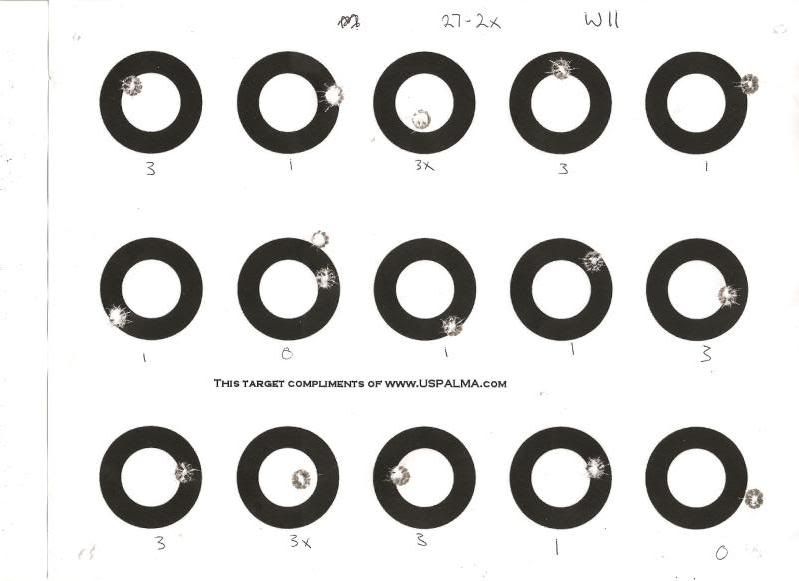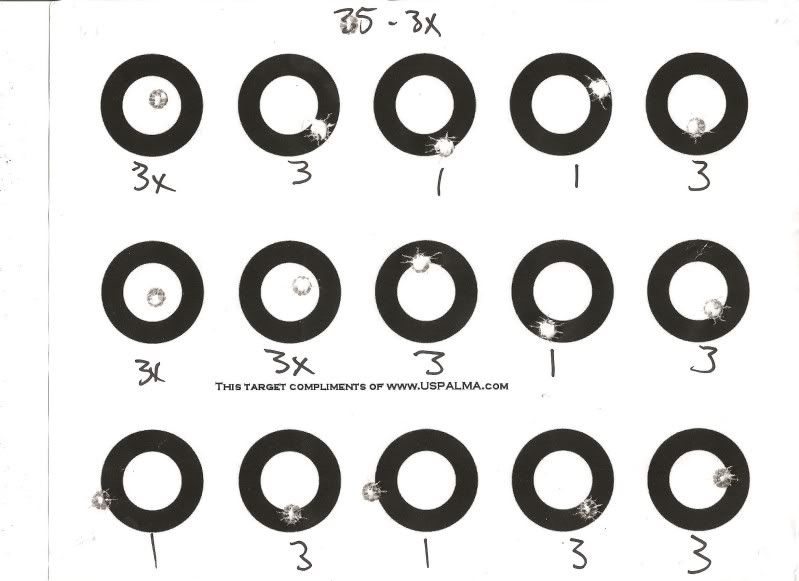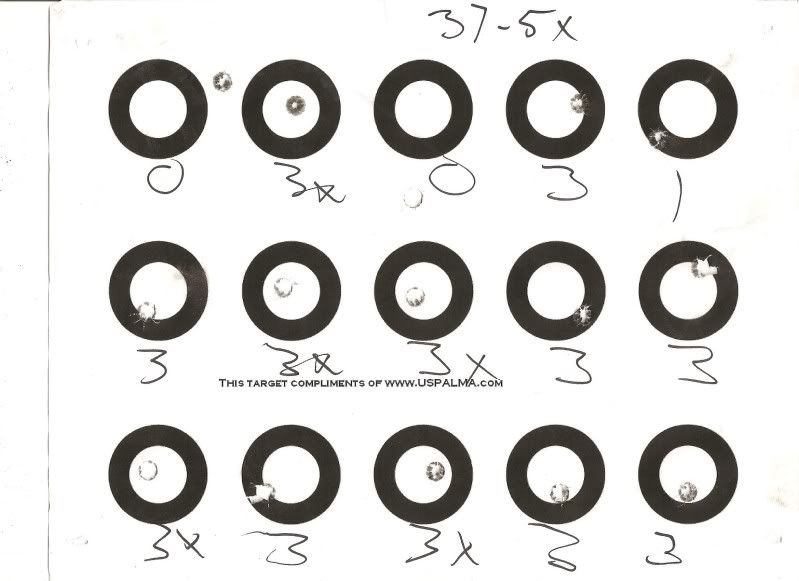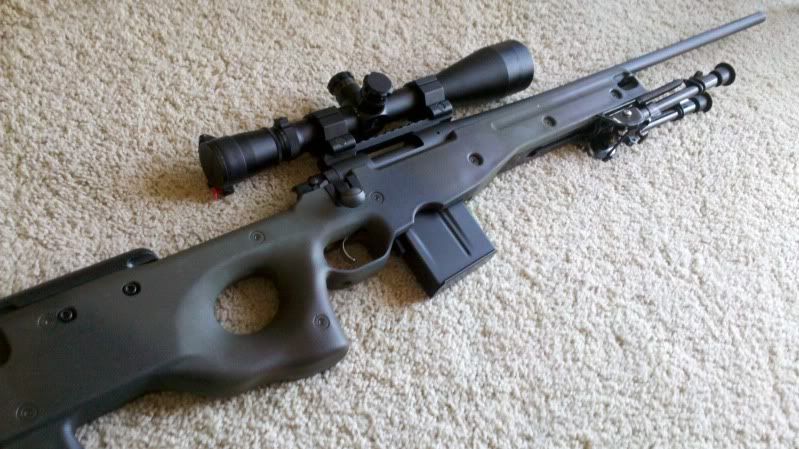Hello all, I thought I'd do a bit of an intro before getting knee deep into the theory, physics, and other fun items associated with my quest for shooting Sub Minute Over Angle (Sub MOA). The name is Chris, my friends in other hobbies know me as Whiskey11 (That's one-one!) and I'm the proud owner of a Remington 700 SPS DM in .308 Winchester caliber.
Since October I've spent the time and money to get this rifle to shoot Sub MOA. For those who are not interested in the shooting world or who are and have no idea what that means, a Minute of an Angle is an angle in degrees of which a minute occupies. Remember in High School geography the Degrees, MINUTES, seconds in longitude and latitude? Same thing. A Minute of Angle is approximately 1/60th of a degree which in the shooting world translates to 1.0471996 inches at 100 yards. For ease of discussion, 1 MOA is equal to 1 inch at 100 yards, 2 at 200, 3 at 300, etc. Thankfully the margin of error, even at 1000 yards for MOA is only four tenths of an inch (almost half an inch), which in the grand scheme of things is not that big.
The Setup
So more about the setup. You know it's a Remington 700 SPS with the Remington Detachable Magazine system. This rifle was bought from Cabela's in Omaha for 600$ after taxes and with cleaning supplies. Not too shabby. It came packaged with a Cabela's brand scope (not bad for hunting for the price of F-R-E-E), and a PALCO case. For 600$, it was a steal of a deal. It shoots .308 Winchester caliber, which is a jack of all trades, master of none cartridge used in various competitions. Why .308 Winchester? For several reasons, the first was the availability of factory match ammo at a reasonable price. That price turns out to be about 25$ per 20 rounds which for match grade ammo is not too bad. Second, the .308 caliber has encyclopedias written about it's ballistics and how it behaves at long range. This is great for someone looking into long range shooting without the expensive of some magnum cartridges or the pain in the shoulder! Third, planning ahead, I would like to add two more .308 rifles to my collection, an AR in .308 WIN, commonly known as the AR10, and Springfield Armory M1A (Match would be great, probably loaded though). It would be nice to have all of the equipment and experience in shooting on a cartridge I know already. Lastly, did I mention it was cheap? Reloading components, factory ammo, it's all cheap and it has seen use world wide in a variety of purposes. As I said, jack of all trades, master of none. That is not to belittle the absolute versatility of the .308 Winchester round! It is an incredible round! It's history proves it!

The first range trip I went out with 100 rounds of Federal Gold Medal Match (FGMM) with the 168 grain Sierra Match King (SMK) Bullet on top. The 168gr SMK is well known for superb accuracy, as is the FGMM factory ammunition. Cabela's was having a deal and I managed to get 100 rounds for about 111$ after taxes. I had added a Rock Mount "Harris" style bipod to the front sling swivel and went to the range. The best groups that day where right around 1.5" @ 100 yards (1.5 MOA). Due to some nasty weather, I wouldn't get to shoot again until after the 1st of the new year.
The Second range trip was a bit more interesting. I had purchased a Lee Anniversary reloading single stage kit with the Lee Match Dies and a Lyman Tumbler. I started working on some loads. The components that I used (and am still using to this day) are CCI 200 Large Rifle Primers, Federal Brass from the FGMM shot earlier, Sierra 168gr SMK's over Hodgdon Varget powder. Component choice is of course rifle specific. It is impossible for any one person to claim one is better than the other. I have not tested much beyond this initial component set up because I'm still trying to use it all up! Various powder charges seemed to work the best and that is what I've stayed with. The average group was around 1.25".
I continued to shoot with the standard set up until the start of February when my Federal and State taxes came in I decided it was time to put some money into this setup. With that money in hand, I put out a purchase to Midway USA for a Accuracy International AICS chassis system for the R700 in .308, a spare 10 round magazine, a Talley 20 MOA Picatinny rail to mount a new scope, a set of Burris X-treme rings, and a Leupold Mark 4 LR/T M1 6.5-20x50mm with the Mil-Dot reticle. I won't justify the price to anyone, the Leupold Mark 4 is probably more scope than I will ever need. It fits within my idea of "Buy Once, Cry Once" stolen happily from Sniper's Hide forums. Of course the meaning is a play off of "You get what you pay for" and so far that has held true. The Mark 4 is iconic in the military as the standard issue scope for sniper rifles (not the reason for the purchase) and is robust and backed by a lifetime warranty from Leupold. I'm impressed with it and it is a much better optic than the 3-9x40 that Cabelas gave with the 700 when I bought it. So how did it shoot? Well the first time with this set up it printed a 1 MOA group @ 100 yards containing 5 shots. Not a huge improvement considering the price spent on the setup.
Last weekend (20 February, 2011) I went out again and shot for a friendly competition on "The High Road" which is a firearms forum (www.thehighroad.org) and shot a 35-3x out of 45-15x as a max. For a sporter profiled barrel from a factory actioned Remington 700 that is NOT BAD! It also printed a 1" edge to edge 10 shot group which translates to .692" center to center @ 100 yards. Why the change? Probably experience and weather. The first time I shot this rifle was near 40* F, this last weekend was mid 60*F which is warm for the midwest in February. For the amount of money spent on this rifle, ammo, and components, an over 50% reduction in group sizes is an acceptable change for a sport profiled Remington 700. This is NOT the end!
So how deep am I into this set up?
Rifle: 600$
Scope: 1300$
Scope Mounting solution: 150$
Stock: 850$
-----------------------
Total: 2900$
Worth it? Sure why not. My goal was never to turn this into a cheap benchrest rifle (YEAH RIGHT!). My goal was to build a rifle that fit my shooting desires. So far I am on the right track. About 600$ into a Krieger Barrel (fluted, in the heaviest profile they make for the 700 and in 24" with a 1:10 twist) and this rifle might as well be complete. I don't see much changing functionally on the rifle. The goal is to put sub .5" groups @ 100 yards and then move to the 200 yard range to continue to shoot for groups. Eventually I would like to make it out to Eastern Nebraska Gun Club (ENGC) to shoot at 600 yards, but I'm not confident enough at 100 yards to move to 200 yards let alone move to 600!
This is the rifle after the AICS stock and Leupold Mark 4 before I painted the stock.
And of course, after painting some more friendly colors for the midwest:







